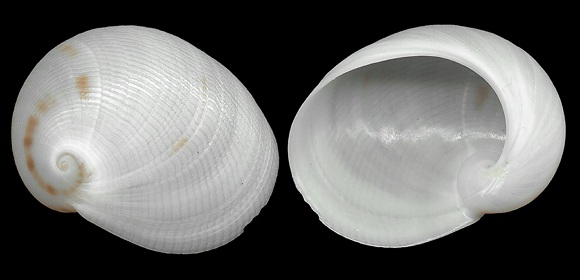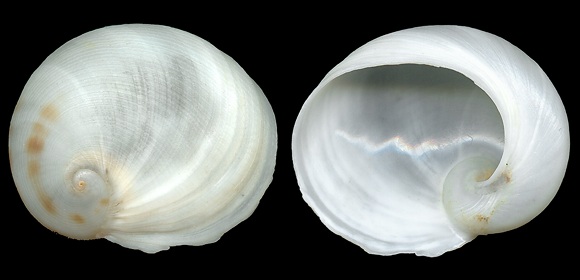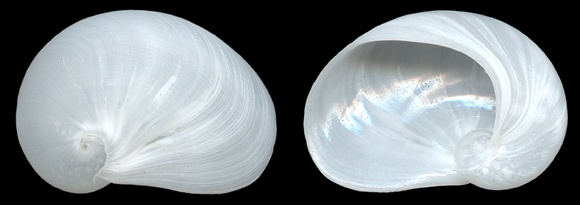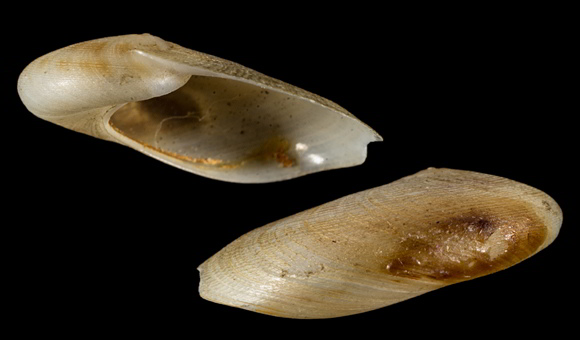
Predator in the infralittoral and the circalittoral.
Original taxon: Sigaretus bifasciatus.
« Shell oval, imperforate, flatted, with a narrow circumference, with a surface carved with fine, undulating streaks, very close together. It is a pure white, under a thin and fibrous epidermis, and adorned with two fasciae formed of red-brown or reddish-brown spots, often confluent. It has three whorls and a half; the last one, larger than all the others, is depressed under the suture, which makes the coil appear a little prominent and slightly convex. This one, on the only copy of our cabinet, is lateral and with an acute summit. » – C. A. Récluz: “Catalogue des espèces du genre Sigaret”, Journal de Conchyliologie vol. II, Paris 1851, p.190.
Above and below: 15m deep, on sand, Málaga, Andalucia, S. Spain. 29-31mm.

« Aperture oval, with a glazed white, showing the two fasciae of the external surface. The inner edge is sharp, barely folded over the umbilicus, which is quite marked by the extension of the internal lip that is very thin and barely apparent on the penultimate lap. The outer edge has a circular shape, short streaks, radiating and well printed at its internal margin and a small notch at its meeting with the penultimate whorl. »

« This species resembles the Lamarck’s haliotis Sigaret by its shape, but differs in its colouring, its strong depression, its narrower outline, and its rounded and striated edge at the margin; that of the species to which we compare it is more extensive in oval and without trace of streaks within its margin. » – Ibid. p.191.
A Sinum haliotoideum (Linnaeus, 1758) of 24mm.
Differences with bifasciatum are obvious.
